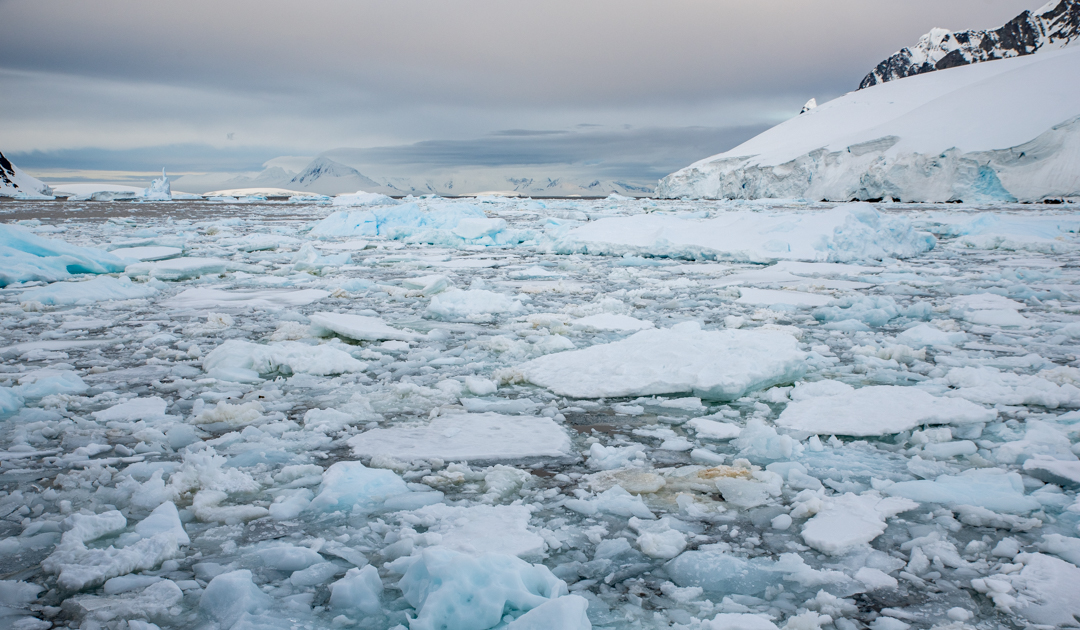
Everything is connected to everything else, no matter how great the distances. This has been confirmed once again. The El Niño Southern Oscillation phenomenon, in short ENSO, more or less regularly disturbs the usual natural processes in the eastern Pacific due to changed ocean currents. But not only there, as an international research team led by the Australian science agency CSIRO has now discovered. According to them, ENSO also influences water temperatures in the Southern Ocean and thus helps determine the fate of Antarctic ice shelves and ice sheets.
El Niño – approximately every four years, starting around Christmas time, the trade winds stop blowing over the Pacific Ocean on the west coast of South America due to changes in atmospheric pressure. As a result, the upwelling of nutrient-rich deep water gradually comes to a halt along the coast, leading to the death of plankton and the collapse of entire food chains. At the same time, a warm water bubble is spilling eastward from the western Pacific, as surface water is no longer being driven westward due to the absence of trade winds. For the marine wildlife on the coast of South America and also on the Galápagos Islands, El Niño phases are usually catastrophic.
In the La Niña counterpart, the trade winds are more pronounced than normal, bringing with them a strong cooling of the eastern Pacific.
Both El Niño and La Niña influence weather patterns worldwide because of the shift in the jet stream, making the ENSO phenomenon an important driver of climate variability. So far, impacts have been known mainly from regions such as the Amazon, Mexico, Southeast Asia, Australia, East Africa and, more recently, the Arctic.

Based on 31 climate models, the research team’s results, published in Nature Climate Change, now show that ENSO also has an impact on Antarctic water temperatures. According to this, a higher variability of ENSO leads on the one hand to a reduced warming of the Antarctic surface water, which is good for the sea ice, but on the other hand to an accelerated warming of deeper water layers, which in turn threatens the ice shelves and ice sheets.
“Climate change is expected to increase the magnitude of ENSO, making both El Niño and La Niña stronger,” Wenju Cai, an expert on the relationship between climate change and ENSO and lead author of the study, said in a CSIRO news release. “This new research shows that stronger El Niño may speed up warming of deep waters in the Antarctic shelf, making ice shelves and ice sheets melt faster.”
At the same time, Dr. Cai further explains, the warming of the water at the edges of the sea ice is slowed, which also slows the melting of the sea ice. “Models with increased ENSO variability show a reduced upwelling of deeper, warmer waters, leading to slower warming of the ocean surface,” he says.

The research team blames these processes on a change in the intensity of the westerly winds along the Antarctic shelf. If ENSO variability increases, westerly winds weaken, reducing the upwelling of warm water – good for sea ice but threatening to ice shelves and ice sheets.
Co-author Ariaan Purich of Securing Antarctica’s Environmental Future at Monash University said the impacts of increasing ENSO variability go beyond extreme weather risks to changes in Antarctic sea ice and ice shelves and ice sheets. “This could have broad implications for the global climate system, so continuing to understand how ENSO will respond to climate change is a critical area of climate research,” says Dr. Purich, adding, “There is still a lot more we need to understand about processes influencing shelf temperatures, and the finding is an important piece of the puzzle.”
Julia Hager, PolarJournal
More on the subject:





